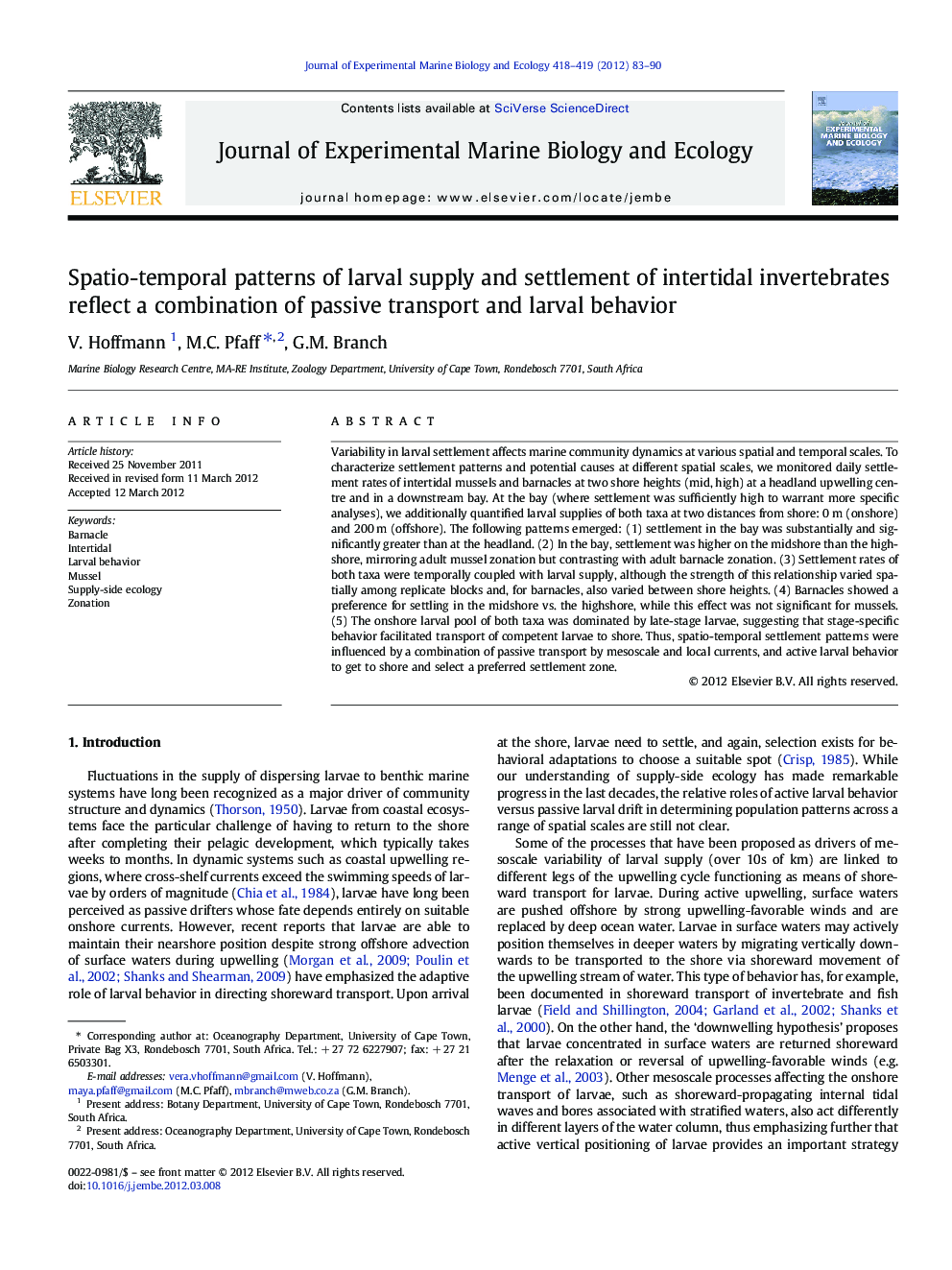| Article ID | Journal | Published Year | Pages | File Type |
|---|---|---|---|---|
| 4396040 | Journal of Experimental Marine Biology and Ecology | 2012 | 8 Pages |
Variability in larval settlement affects marine community dynamics at various spatial and temporal scales. To characterize settlement patterns and potential causes at different spatial scales, we monitored daily settlement rates of intertidal mussels and barnacles at two shore heights (mid, high) at a headland upwelling centre and in a downstream bay. At the bay (where settlement was sufficiently high to warrant more specific analyses), we additionally quantified larval supplies of both taxa at two distances from shore: 0 m (onshore) and 200 m (offshore). The following patterns emerged: (1) settlement in the bay was substantially and significantly greater than at the headland. (2) In the bay, settlement was higher on the midshore than the highshore, mirroring adult mussel zonation but contrasting with adult barnacle zonation. (3) Settlement rates of both taxa were temporally coupled with larval supply, although the strength of this relationship varied spatially among replicate blocks and, for barnacles, also varied between shore heights. (4) Barnacles showed a preference for settling in the midshore vs. the highshore, while this effect was not significant for mussels. (5) The onshore larval pool of both taxa was dominated by late-stage larvae, suggesting that stage-specific behavior facilitated transport of competent larvae to shore. Thus, spatio-temporal settlement patterns were influenced by a combination of passive transport by mesoscale and local currents, and active larval behavior to get to shore and select a preferred settlement zone.
► We show spatio-temporal patterns in settlement of intertidal mussels and barnacles. ► Settlement is higher in a retentive bay than at a headland upwelling centre. ► Settlement rates are temporally coupled with larval supply rates. ► Mussel settlement conforms to adult zonation, whereas barnacle settlement does not. ► Stage-specific behavior facilitates the onshore transport of barnacle larvae.
